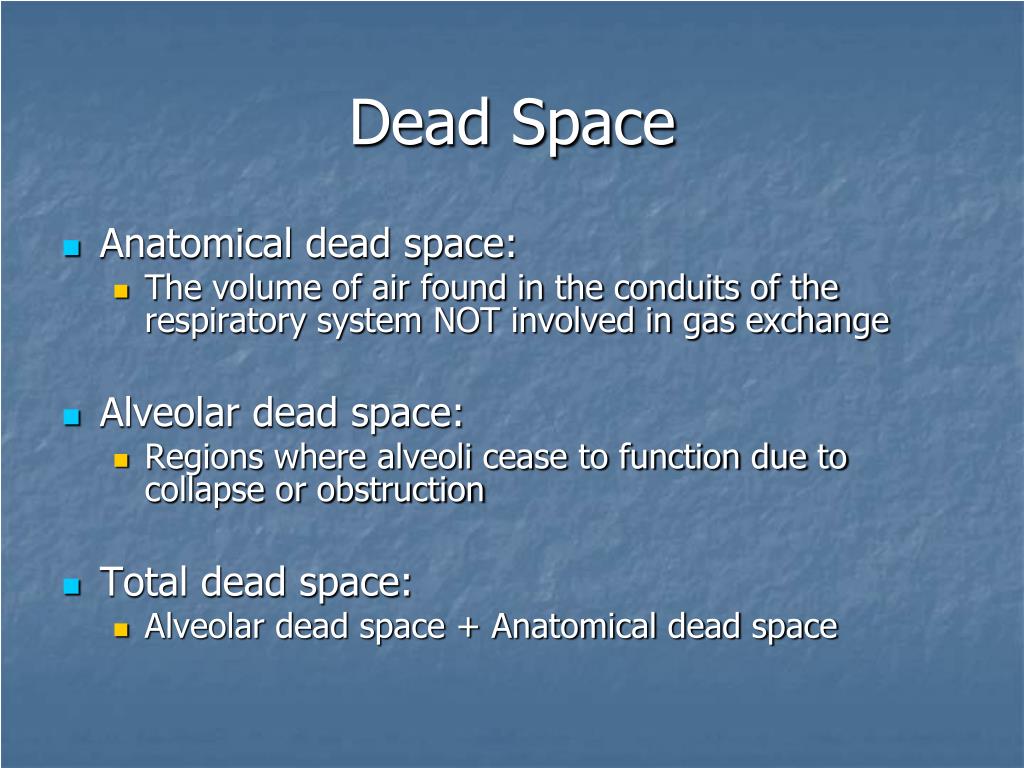

It differs from anatomical dead space as measured by Fowler's method as it includes alveolar dead space. This is given as a ratio of dead space to tidal volume. The Bohr equation, named after Danish physician Christian Bohr (1855–1911), describes the amount of physiological dead space in a person's lungs. Thus the effective part of Tidal volume in males is $500 - 150 = 350$ ml and that of females is $400 - 150 = 250$ ml.Not to be confused with the Bohr model or the Bohr effect. If the physiological dead space value rises above $200$ ml then there can be a pathological condition of the lungs ( diseases like emphysema, COPD, Pneumothorax, etc.) The value of the anatomical dead space volume is $30\% $ of the Tidal volume ($500$ ml). The value of physiological dead space is $180 - 200$ ml. The anatomical dead space along with the alveolar dead space is considered as the physiological dead space and the air contained in physiological dead space air. As a result, the inspired air doesn't participate in the gaseous exchange. In rare conditions, the blood supply of the alveoli is hampered resulting in inefficient gaseous exchange through the alveoli.

Physiological dead space – In the lungs, the alveoli are concentrated with blood capillaries supplying blood to the alveoli.

Two types of dead space are found -Īnatomical dead space – the part of the respiratory tract before the bronchioles ( nasal cavities, nasopharynx, larynx, trachea, bronchioles) where gaseous exchange does not take place are referred to as anatomical dead space. The value of Residual volume is found to be $1200$ ml in the case of males and $960$ ml in the case of females.ĭead space is a part of the respiratory tract, containing a part of inspired air not participating in a gaseous exchange with blood capillaries and the amount of air present in the dead space is known as the dead space air. Residual volume is the amount of air found in both the lungs after a forceful expiration.

Various lung diseases are diagnosed by the physiological dead space volume. Residual volume is a normal phenomenon but the dead space volume(physiological dead space) occurs due to lack of the blood supply into the alveoli resulting in the improper gaseous exchange of the alveoli. Hint: No, residual volume and dead space volume are not synonymous.


 0 kommentar(er)
0 kommentar(er)
